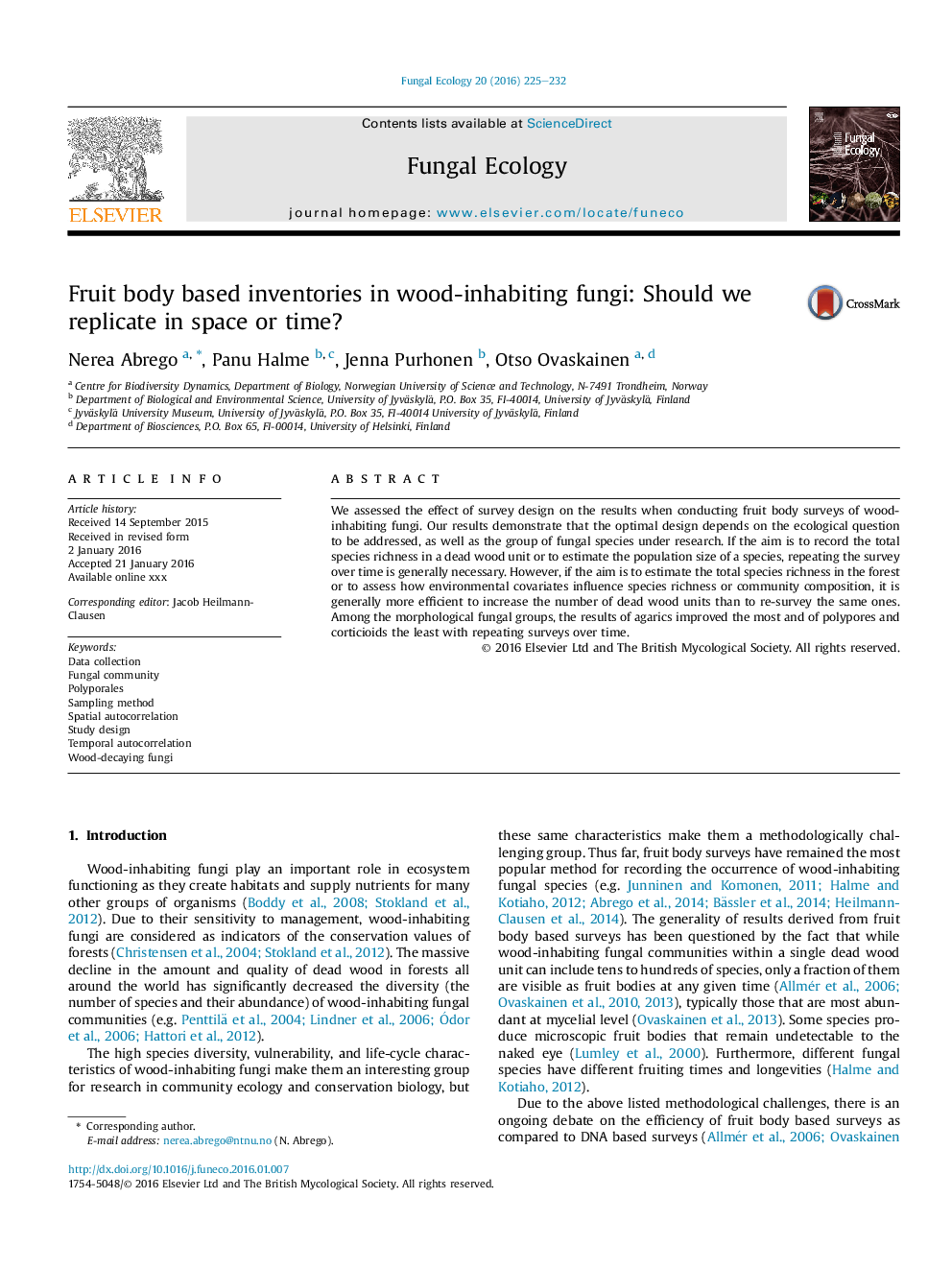| Article ID | Journal | Published Year | Pages | File Type |
|---|---|---|---|---|
| 8384510 | Fungal Ecology | 2016 | 8 Pages |
Abstract
We assessed the effect of survey design on the results when conducting fruit body surveys of wood-inhabiting fungi. Our results demonstrate that the optimal design depends on the ecological question to be addressed, as well as the group of fungal species under research. If the aim is to record the total species richness in a dead wood unit or to estimate the population size of a species, repeating the survey over time is generally necessary. However, if the aim is to estimate the total species richness in the forest or to assess how environmental covariates influence species richness or community composition, it is generally more efficient to increase the number of dead wood units than to re-survey the same ones. Among the morphological fungal groups, the results of agarics improved the most and of polypores and corticioids the least with repeating surveys over time.
Keywords
Related Topics
Life Sciences
Agricultural and Biological Sciences
Ecology, Evolution, Behavior and Systematics
Authors
Nerea Abrego, Panu Halme, Jenna Purhonen, Otso Ovaskainen,
